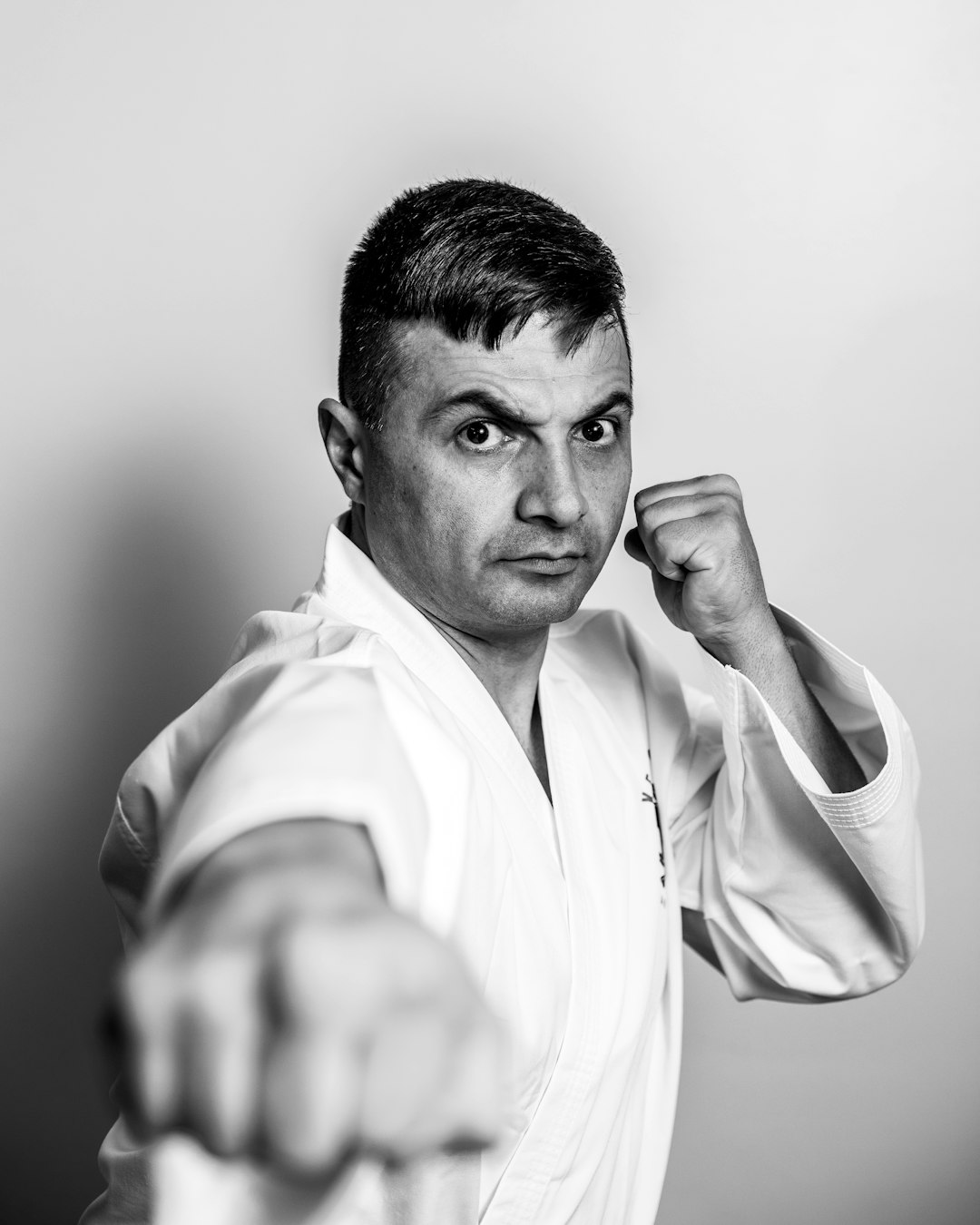The article provides an in-depth explanation of the traditional attire used in karate practice, known as a "gi" or its Japanese equivalent, "keikogi." Both terms are interchangeable and refer to the two-piece garment consisting of a jacket, called an uwagi, and trousers, called bakama, which are made from heavy cotton or hemp for durability and comfort. The design of the gi is purposefully crafted to allow for fluid movement during practice and competitions, while also carrying symbolic cultural significance that reflects respect and discipline within the martial arts community. It is important for karate practitioners to be aware of the correct terminology when discussing these uniforms, as it is essential for both the functional aspect of training and the ceremonial importance of the attire. The article further notes that while a gi and a keikogi can be used synonymously, the latter holds a more formal connotation in certain karate styles. Additionally, practitioners have access to various accessories like protective gear and a lighter alternative called a dogi, which is suitable for competitions or specific styles of karate. Ultimately, understanding the options available for karate uniforms is key to ensuring both safety and effectiveness in training.
Embark on a journey into the disciplined world of martial arts, where tradition meets precision. As you don the requisite attire for a bout of karate, have you ever pondered what these clothes are specifically called? This article delves into the terminology surrounding karate uniforms, illuminating their significance beyond mere garments. From the fundamental understanding of ‘Gi’ and ‘Keikogi’ to the nuances of accessories and variations in training attire, we explore the karate uniform name and its importance. Join us as we unravel the essence of karate wear and enhance your appreciation for this pivotal aspect of martial arts practice.
- Unveiling the Terminology: What Are Karate Uniforms Called?
- The Anatomy of a Karate Uniform: Understanding Gi and Keikogi
- Beyond the Basics: Accessories and Variations in Karate Training Attire
Unveiling the Terminology: What Are Karate Uniforms Called?

When delving into the world of martial arts, one term often encountered is “karate uniform.” But what exactly is the formal name for these garments? Karate practitioners, like those in other disciplines, wear a specific type of attire designed to facilitate movement and provide comfort during practice and competition. The karate uniform, known as a “gi” or “keikogi,” is a traditional two-piece outfit consisting of a jacket and trousers, typically made of heavy cotton or hemp fabric. The top, or “uwagi,” reaches just below the waist, while the trousers, called “bakama,” extend to the ankles and are secured with a drawstring. These uniforms serve not only as functional wear but also as a symbol of respect and discipline within the martial arts community. Are karate uniforms referred to by a specific name? Indeed, they are known as a “gi” or “keikogi,” which emphasizes their role as both a training tool and a representation of the martial artist’s commitment. Whether you are a beginner or an experienced practitioner, the gi is an integral part of karate tradition, signifying unity and readiness in practice and competition.
The Anatomy of a Karate Uniform: Understanding Gi and Keikogi

When practicing the discipline of karate, one is often encased in a uniform known as a gi or more traditionally, a keikogi. Both terms refer to the same garment but have different origins and connotations within the martial arts community. The gi, which can be transliterated from Japanese as “keikogi,” is a two-piece ensemble consisting of a jacket and pants, often worn with a belt signifying the wearer’s rank. What do you call karate clothes? They are commonly referred to as both ‘gi’ and ‘keikogi.’ The gi is designed not just for ceremonial purposes but also for functionality during training, allowing for ease of movement while providing adequate coverage for various techniques and maneuvers executed in practice.
The top half of the gi typically features a set of four pockets on each side, though these are often more decorative than functional, serving to hold the jacket closed rather than for storing items. The pants, or trousers, are straight-legged and secured with ties at the sides, along with a drawstring for adjusting fit. The fabric of the gi is usually cotton or hemp, offering durability and comfort during intensive training sessions. It’s also worth mentioning that while the terms ‘gi’ and ‘keikogi’ are often used interchangeably, purists might distinguish between them, with ‘keikogi’ being a slightly more formal term for the uniform in certain styles of karate.
Beyond the Basics: Accessories and Variations in Karate Training Attire

When engaging in karate, practitioners don the traditional karate uniform, often referred to as a “gi” or “keikogi.” This garment is designed for functionality and comfort during practice. However, beyond the basics of the gi, there are various accessories and variations in karate training attire that cater to different needs and preferences. For instance, do karate practitioners wear any protective gear? Yes, they do. Protective pads are essential for sparring to prevent injuries. These typically include hand protectors, foot protectors, and sometimes chest protectors, depending on the level of contact in the training session. Additionally, some karateka might opt for more specialized attire for competitions or specific styles, such as a “dogi,” which is lighter and less formal than the traditional gi. Do these variations in attire significantly impact performance? While the choice of garment may influence an athlete’s range of motion and comfort, it is ultimately the skill and technique of the practitioner that determine their effectiveness in practice or competition. Whether choosing a traditional gi or a more modern dogi, accessorizing with protective gear, or selecting attire specific to one’s style or level of training, understanding the options available can enhance both safety and performance for karate enthusiasts.
In wrapping up our exploration of the world of karate, a discipline that honors tradition as much as it emphasizes technique and discipline, understanding the terminology surrounding one’s attire is key. Karate practitioners don specific garments designed to facilitate their practice—these are known as karate uniforms. Delving into “What Are Karate Uniforms Called?” has revealed that these uniforms bear distinct names: the Gi and Keikogi. These terms are not interchangeable; each holds significance within the martial arts community. Beyond the fundamental understanding of these terms, one must also be aware of the accessories and variations in karate training attire that cater to different needs and preferences. Whether you’re a seasoned martial artist or an enthusiastic novice, grasping the karate uniform name is an essential aspect of fully engaging with the practice.
